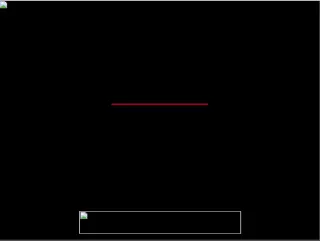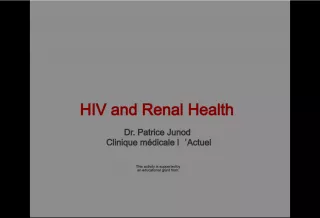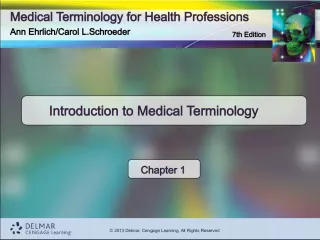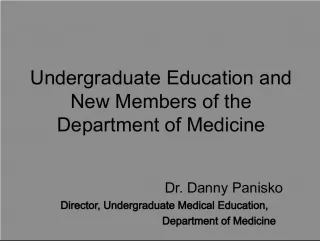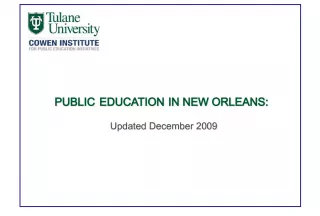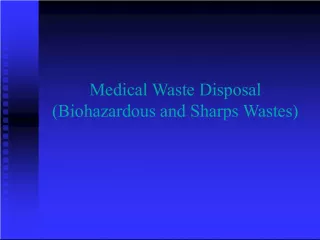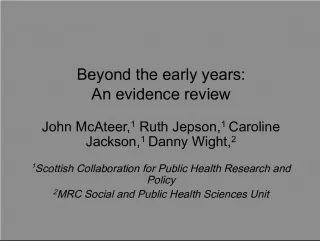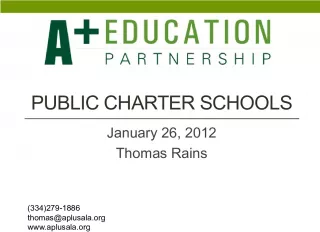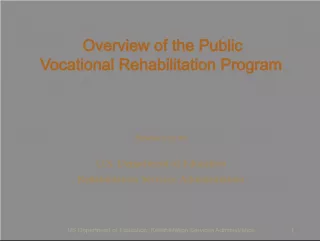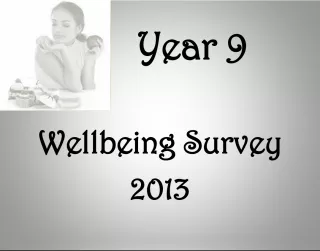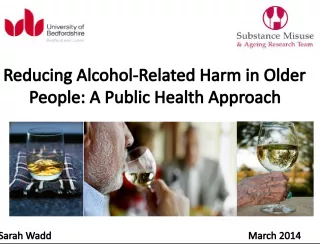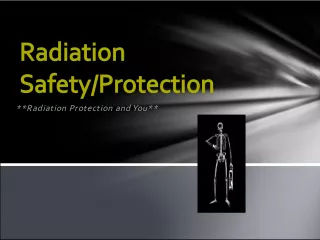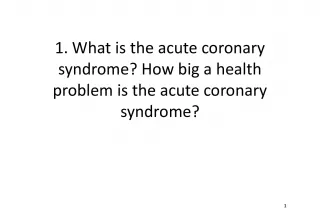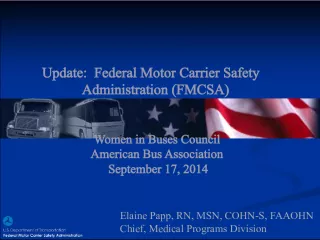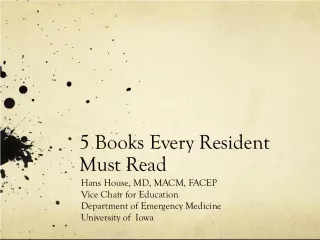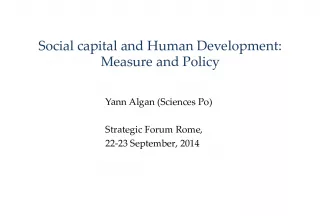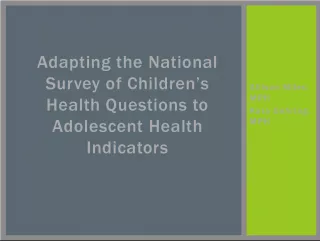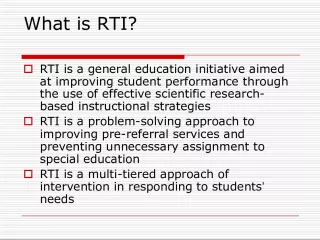Public Health and Medical Education: RMPHEC Initiative
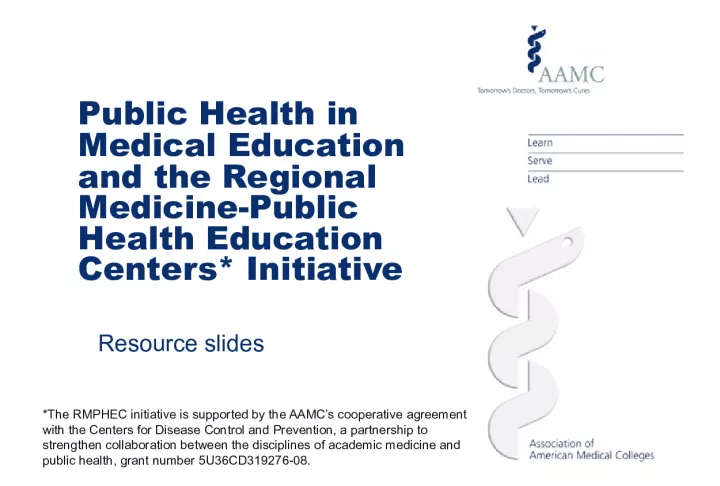

AAMC supports the RMPHEC initiative to strengthen collaboration between academic medicine and public health. These resource slides aim to improve public health content in medical education. Users can select slides and incorporate them into their curricula.
- Uploaded on | 3 Views
-
 yeni
yeni
About Public Health and Medical Education: RMPHEC Initiative
PowerPoint presentation about 'Public Health and Medical Education: RMPHEC Initiative'. This presentation describes the topic on AAMC supports the RMPHEC initiative to strengthen collaboration between academic medicine and public health. These resource slides aim to improve public health content in medical education. Users can select slides and incorporate them into their curricula.. The key topics included in this slideshow are . Download this presentation absolutely free.
Presentation Transcript
1. Public Health in Medical Education and the Regional Medicine-Public Health Education Centers* Initiative *The RMPHEC initiative is supported by the AAMC’s cooperative agreement with the Centers for Disease Control and Prevention, a partnership to strengthen collaboration between the disciplines of academic medicine and public health, grant number 5U36CD319276-08. Resource slides
2. Purpose These slides provide an overview of the relationship between medicine and public health and a review of recommendations and resources to improve public health content in medical education. Users may select slides and incorporate them into their curricula, presentations, and efforts to advocate for improving public health perspectives at their institutions. The slides are divided into five sections (listed in the next slide) to facilitate their use.
3. Sections • Public health and medicine: relationships and comparisons • Historic and contemporary recommendations to improve public health content in medical education, including public health topics that are relevant to the practice of medicine • Data: public health in medical education • The Regional Medicine-Public Health Education Center Initiative • Suggested reading
4. Public health and medicine: relationships and comparisons • Historic perspectives on medicine and public health • Medicine/Public Health Initiative • Essential services of public health • Comparing public health and medicine (Harvey V. Fineberg, MD, PhD)
5. ©2011 Association of American Medical Colleges. May be reproduced, distributed and modified, with attribution for educational or noncommercial purposes only. 1924-George E. Vincent ( President, Rockefeller Foundation 1917-1929) In spite of the progress of public health work the medical schools have too generally neglected or slighted the preventive side of medicine. This has had an unfortunate result. The average physician fails to see as clearly as he should that he is a vital part of the public health organization, that he is expected to discover and to report communicable diseases, to instruct his patients, to support the local authorities, to help create sound public opinion. 1875-Theodore Billroth …The physician, as one of the most important members of the community, is expected not only to help in cases of individual sickness, but in community diseases as well. He is even expected to do his part in curing the stupidity and indifference of humanity…The fanatical champions of public health are fighting for a goal that is too high for my myopic vision. I can admire the struggle, but I cannot become interested in it .
6. ©2011 Association of American Medical Colleges. May be reproduced, distributed and modified, with attribution for educational or noncommercial purposes only. What is Public Health?
7. ©2011 Association of American Medical Colleges. May be reproduced, distributed and modified, with attribution for educational or noncommercial purposes only. Essential Public Health Services Monitor health status to identify community health problems. Diagnose and investigate health problems and health hazards in the community. Inform, educate, and empower people about health issues. Mobilize community partnerships to identify and solve health problems. Develop policies and plans that support individual and community health efforts. Enforce laws and regulations that protect health and ensure safety. Link people to needed personal health services and assure the provision of health care when otherwise unavailable. Assure a competent public health and personal healthcare workforce. Evaluate effectiveness, accessibility, and quality of personal and population-based health services. Research for new insights and innovative solutions to health problems.
8. ©2011 Association of American Medical Colleges. May be reproduced, distributed and modified, with attribution for educational or noncommercial purposes only. Public Health vs. Medicine Public Health Medicine Primary focus on population Primary focus on individual Public service ethic, tempered by concerns for the individual Personal service ethic, conditioned by awareness of social responsibilities Emphasis on prevention, health promotion for the whole community Emphasis on diagnosis and treatment, care for the whole patient Public health paradigm employs a spectrum of interventions aimed at the environment, human behavior and lifestyle, and medical care Medical paradigm places predominant emphasis on medical care Multiple professional identities with diffuse public image Well-established profession with sharp public image Table 1. Perspectives of medicine and public health. Fineberg HV. Public health and medicine: where the twain shall meet. American Journal of Preventive Medicine. 2011; 41(4 S3): S141-S143
9. ©2011 Association of American Medical Colleges. May be reproduced, distributed and modified, with attribution for educational or noncommercial purposes only. Public Health vs. Medicine Public Health Medicine Variable certification of specialists beyond professional public health degree Uniform system for certifying specialists beyond professional medical degree Lines of specialization organized, for example, by: • Analytical method (epidemiology) • Setting and population (occupational health) • Substantive health problem (nutrition) • Skills in assessment, policy development, and assurance Lines of specialization organized, for example, by: • Organ system (cardiology) • Patient group (pediatrics) • Etiology, pathophysiology (oncology, infectious diseases) • Technical skill (radiology) Table 1. Perspectives of medicine and public health. Fineberg HV. Public health and medicine: where the twain shall meet. American Journal of Preventive Medicine. 2011; 41(4 S3): S141-S143
10. ©2011 Association of American Medical Colleges. May be reproduced, distributed and modified, with attribution for educational or noncommercial purposes only. Public Health vs. Medicine Public Health Medicine Biological sciences central, stimulated by major threats to health of populations; move between laboratory and field Biological sciences central, stimulated by needs of patient; move between laboratory and bedside Numeric sciences an essential feature of analysis and training Numeric sciences increasing in prominence, though still a relatively minor part of training Social sciences an integral part of public health education Social sciences tend to be an elective part of medical education • Clinical sciences peripheral to professional training • Clinical sciences an essential part of professional training Table 1. Perspectives of medicine and public health. Fineberg HV. Public health and medicine: where the twain shall meet. American Journal of Preventive Medicine. 2011; 41(4 S3): S141-S143
11. ©2011 Association of American Medical Colleges. May be reproduced, distributed and modified, with attribution for educational or noncommercial purposes only. Public Health Matters to Medical Care and to Medical Education • Independently interpret the medical literature • Apply findings to individual patients • Central to sound medical care and health policy and public health practices Epidemiology, the core discipline of public health, is essential to understanding the cause and distribution of disease • Understand the etiology and optimal management of disease • Appreciate multiple origins of illness • Have an integrative explanation of illness that embraces genetic, molecular, biochemical, and physiological factors with behavioral, social, nutritional and environmental factors Public health teaches the influence of environmental, nutritional, social, and behavioral factors on health, illness, recovery, and wellness • Interventions include: public health education, social campaigns, ordinances and laws, standards and regulations, surveillance and preparedness • Gain a deeper understanding of the conditions that preserve health, of the primacy of disease prevention, and of the interfaces between personal medical care and community health protection Understanding the role and potential for public health interventions better positions physicians to improve patient health and foster interdisciplinary collaboration Fineberg HV. Public health and medicine: where the twain shall meet. American Journal of Preventive Medicine. 2011; 41(4 S3): S141-S143.
12. ©2011 Association of American Medical Colleges. May be reproduced, distributed and modified, with attribution for educational or noncommercial purposes only. Public Health Matters to Medical Care and to Medical Education • Supports the ability of patients to participate in their own health care and to protect their family’s health Public health emphasizes cultural sensitivity (similarities and differences in values, mores, and practices), community engagement, and health literacy • Directly supports patient safety and the quality of medical care • Provides a way of describing and understanding the performance of everything from an individual medical encounter to the health system as a whole Public health stresses systems thinking, an engineering concept that explains observed performance in terms of connected parts that interact in a variety of interdependent ways • Apart from those who will choose to concentrate in a public health field, many practitioners in such fields as general and specialty medicine, emergency medicine, pediatrics, family medicine, obstetrics and gynecology, ophthalmology, and general surgery will find rewarding opportunities for part-time engagement in one or another aspect of population health. • Many physicians will find that public health is the continuation of medicine by other means, potentially affecting millions of individuals at a time Public health exposes physicians to exciting and fulfilling career opportunities in such diverse areas as global health, disaster response, health policy, and environmental health Fineberg HV. Public health and medicine: where the twain shall meet. American Journal of Preventive Medicine. 2011; 41(4 S3): S141-S143.
13. Historic and contemporary recommendations to improve public health content in medical education, including public health topics that are relevant to the practice of medicine • Hippocrates (~400BC) • Abraham Flexner (1910) • William W. Welch, MD and Wycliffe Rose (1915) • AAMC Committee on the Teaching of Preventive Medicine and Public Health (1939) • AAMC Medical School Objectives Project, Report II. Contemporary Issues in Medicine: Medical Informatics and Population Health (1998) • Institute of Medicine. Who Will Keep the Public Healthy: Educating Public Health Professionals for the 21st Century (2002) • Institute of Medicine Training Physicians for Public Health Careers (2007) • Healthy People Curriculum Framework (Clinical Prevention and Population Health) (2009) • Healthy People 2020
14. ©2011 Association of American Medical Colleges. May be reproduced, distributed and modified, with attribution for educational or noncommercial purposes only. ~400 BC Hippocrates “ The function of protecting and developing health must rank even above that of restoring it when it is impaired.”
15. ©2011 Association of American Medical Colleges. May be reproduced, distributed and modified, with attribution for educational or noncommercial purposes only. 1910 Abraham Flexner “The overwhelming importance of preventive medicine, sanitation, and public health indicates that in modern life the medical profession is an organ differentiated by society for its highest purposes, not a business to be exploited.” “…the physician’s function is fast becoming social and preventive, rather than individual and curative. Upon him society relies to ascertain, and through measures essentially educational to enforce, the conditions that prevent disease and make positively for physical and moral well-being.”
16. ©2011 Association of American Medical Colleges. May be reproduced, distributed and modified, with attribution for educational or noncommercial purposes only. 1915 William W. Welch, M.D. Wickliffe Rose “It is of the utmost importance that education in the principles of hygiene be available for students and graduates in medicine who are to engage in the practice of their profession.”
17. ©2011 Association of American Medical Colleges. May be reproduced, distributed and modified, with attribution for educational or noncommercial purposes only. 1944 Final Report on the Teaching of Preventive Medicine and Public Health “Facing an already overcrowded and not entirely elastic curriculum, proponents of preventive medicine and public health have been forced to insinuate these subjects into the teaching schedule in an opportunistic rather than a systematic manner.”
18. ©2011 Association of American Medical Colleges. May be reproduced, distributed and modified, with attribution for educational or noncommercial purposes only. 1998 AAMC Medical School Objectives Project, Report II. Contemporary Issues in Medicine: Medical Informatics and Population Health “Each school should develop an explicit list of mechanisms by which population health objectives are to be met.” • Epidemiology • Biostatistics • Disease prevention/health promotion • Health care organization, management, and financing • Environmental health • Public health
19. ©2011 Association of American Medical Colleges. May be reproduced, distributed and modified, with attribution for educational or noncommercial purposes only. 2002 • Epidemiology • Biostatistics • Environmental health • Health services administration • Social and behavioral sciences • Informatics • Genomics • Communication • Cultural competence • Community-based participatory research • Global health • Policy and law • Ethics Institute of Medicine. Who Will Keep the Public Healthy: Educating Public Health Professionals for the 21st Century “All students in medical schools should receive basic public health training in the population-based prevention approaches to health.”
20. ©2011 Association of American Medical Colleges. May be reproduced, distributed and modified, with attribution for educational or noncommercial purposes only. 2007 Institute of Medicine Training Physicians for Public Health Careers • All physicians are part of the public health system. • Endorses earlier recommendations regarding public health content that should be taught to all medical students and adds: • Leadership • Public health emergency preparedness • Clinical and community preventive services provision • Develop models to integrate training in public health principles and practice into physician education at both the undergraduate and graduate levels. • Each GME program identify and include the public health concepts and skills relevant to the practice of that specialty. • Continuing education on relevant emerging topics and public health practice updates, public health competency self-assessment, public health questions relevant to the specialty on recertification exams.
21. ©2011 Association of American Medical Colleges. May be reproduced, distributed and modified, with attribution for educational or noncommercial purposes only. 2009 Evidence-based practice • Problem description - Descriptive Epidemiology • Etiology, Benefits and Harms ‐ Evaluating Health Research • Evidence ‐ Based Recommendations • Implementation and Evaluation Health systems and health policy • Organization of clinical and public health systems • Health services financing • Health workforce • Health policy process Clinical preventive services and health promotion • Screening • Counseling for behavioral change • Immunization • Preventive medication • Other preventive interventions Population health and community aspects of practice • Communicating and sharing health information with the public • Environmental health • Occupational health • Global health issues • Cultural dimensions of practice • Community services Healthy People Curriculum Framework (Clinical Prevention and Population Health)
22. ©2011 Association of American Medical Colleges. May be reproduced, distributed and modified, with attribution for educational or noncommercial purposes only. Healthy People 2020 Educational and community-based program Objective 12 (ECBP-12): “Increase the inclusion of core clinical prevention and population health content in M.D.-granting medical schools.” ECBP-12.1: Counseling for health promotion and disease prevention ECBP-12.2: Cultural diversity ECBP-12.3: Evaluation of health sciences literature ECBP-12.4: Environmental health ECBP-12.5: Public health systems ECBP-12.6: Global health
23. ©2011 Association of American Medical Colleges. May be reproduced, distributed and modified, with attribution for educational or noncommercial purposes only. Topics Tracked for Healthy People 2020 (Proposed) HP2020 Baseline (Proposed)* HP2020 Goal (Proposed)* Counseling for behavior change 95.2 % 100% Cultural diversity 99.2 % 100% Environmental health 85.7% 94.3% Evaluation of health sciences literature 93.7% 100% Global health 77.8% 85.6% Public Health Systems 78.6% 86.5% Healthy People 2020 *Percent of schools where instruction in the topic is required
24. Data: public health in medical education • LCME (Liaison Committee on Medical Education) Data • Graduation questionnaire
25. ©2011 Association of American Medical Colleges. May be reproduced, distributed and modified, with attribution for educational or noncommercial purposes only. • Biological/Chemical Terrorism • Biostatistics • Chemoprevention Methods • Clinical/Translational Research • Communication Skills • Community Health • Counseling for Health Risk Reduction • Cultural Diversity • Culturally-related Health Behaviors • Disaster Management/Response • Disease Screening Tests • Environmental Health • Epidemiology • Evaluation of Health Research Literature • Evidence-based Medicine • Global Health Issues • Health Care Financing • Health Care Quality Improvement • Health Care Systems • Health Determinants • Health Disparities • Health Literacy • Health Policy Development Processes • Health Services Financing • Health Surveillance Strategies • Healthcare Workforce • Immunization • Medical Informatics • Medical Jurisprudence • Medical Licensure/Regulation • Medical Socioeconomics • Nutrition • Occupational Medicine • Patient Health Education • Population-based Medicine • Prevention/Health Maintenance • Public Health Systems • Racial/ethnic Demographics of Illness • Research Methods • Tobacco Dependence (diagnosis) • Tobacco Dependence (management) 2008 LCME Part II Annual Medical School Questionnaire
26. ©2011 Association of American Medical Colleges. May be reproduced, distributed and modified, with attribution for educational or noncommercial purposes only. Proportion of schools that include topics in required instruction (LCME Annual Medical School Questionnaire Part II)
27. ©2011 Association of American Medical Colleges. May be reproduced, distributed and modified, with attribution for educational or noncommercial purposes only. • Biological, chemical, and natural disaster management • Biostatistics • Community medicine • Conducting systematic literature review • Culturally appropriate care for diverse populations • Disease prevention • Environmental health • Epidemiology • Global health issues • Health and healthcare disparities • Health determinants • Health maintenance • Health policy • Health surveillance strategies • Interpretation of clinical data and research reports • Law and medicine • Occupational medicine • Public health • Role of community health and social service agencies Graduation Questionnaire 2009
28. ©2011 Association of American Medical Colleges. May be reproduced, distributed and modified, with attribution for educational or noncommercial purposes only. Graduation Questionnaire: Time devoted to instruction in topics is inadequate
29. The Regional Medicine-Public Health Education Centers Initiative • History • Accomplishments • Grantee curricular innovations • Population health competencies • Support of revised LCME standards • Dissemination (Exhibit) • Patients and Populations: Public Health in Medical Education Conference (2010) • Patients and Populations: Public Health in Medical Education American Journal of Preventive Medicine supplement (2011) For more information about the Regional Medicine-Public Health Education Centers Initiative, please visit www.aamc.org/rmphec
30. ©2011 Association of American Medical Colleges. May be reproduced, distributed and modified, with attribution for educational or noncommercial purposes only. AAMC Cooperative Agreement with the Centers for Disease Control and Prevention (CDC) • First established in 2000 • Objective of 1st 5 year cycle: • Promote the teaching of prevention and public health in academic medical centers. • Theme of 2 nd cycle: • “A partnership to strengthen collaboration between the disciplines of academic medicine and public health”
31. ©2011 Association of American Medical Colleges. May be reproduced, distributed and modified, with attribution for educational or noncommercial purposes only. Regional Medicine-Public Health Education Centers (Pilot-2003) • Mercer University School of Medicine • Morehouse School of Medicine • Northeastern Ohio Universities College of Medicine • SUNY Upstate Medical University • Texas Tech School of Medicine • University of Kansas School of Medicine • University of New Mexico School of Medicine
33. ©2011 Association of American Medical Colleges. May be reproduced, distributed and modified, with attribution for educational or noncommercial purposes only. Regional Medicine-Public Health Education Centers (2006 Cohort) • The Brody School of Medicine at East Carolina University • Case Western Reserve University School of Medicine • Harvard Medical School • Mercer University School of Medicine • Southern Illinois University School of Medicine • Stanford University School of Medicine • University of California, Davis School of Medicine • University of Colorado School of Medicine • University of New Mexico School of Medicine • University of Rochester School of Medicine and Dentistry • University of Vermont College of Medicine
35. ©2011 Association of American Medical Colleges. May be reproduced, distributed and modified, with attribution for educational or noncommercial purposes only. Regional Medicine-Public Health Education Centers-GME • Beth Israel Deaconess Medical Center • Brody School of Medicine at East Carolina University • Cambridge Health Alliance • College of Medicine, Mayo Clinic • Columbia University College of Physicians and Surgeons • Montefiore Medical Center • Northwestern University Feinberg School of Medicine • Rhode Island Hospital • University of Florida HSC/Jacksonville • University of Massachusetts Medical School • University of Oklahoma Health Sciences Center • University of Rochester School of Medicine and Dentistry • University of Wisconsin School of Medicine and Public Health
36. ©2011 Association of American Medical Colleges. May be reproduced, distributed and modified, with attribution for educational or noncommercial purposes only. Specialties represented by RMPHEC-GME sites • Emergency medicine • Family medicine • Internal medicine • Obstetrics • Pediatrics • Preventive medicine • Psychiatry • Social medicine • Surgery
38. ©2011 Association of American Medical Colleges. May be reproduced, distributed and modified, with attribution for educational or noncommercial purposes only. RMPHEC Activities Case studies Certificate in public health Pandemic drills Population health rounds Population health projects Public health conversations Student assessments Student interest groups Grantee projects Grantee collaborations Medical school population health competencies Coordinated response to proposed LCME standards Academic Medicine Flexner Centenary article Dissemination Publications, including April 2008 Academic Medicine theme issue on Population Health Education September 2010 “Patients and Populations: Public Health in Medical Education” conference Evaluation
39. ©2011 Association of American Medical Colleges. May be reproduced, distributed and modified, with attribution for educational or noncommercial purposes only. Competency Topics • Population health assessment using data • Determinants of health • Evidence-based practice • Primary and secondary prevention • Community assets/resources • Community engagement • Population health improvement strategies • Public health system functions • Health care system • Resource allocation • Quality improvement
40. ©2011 Association of American Medical Colleges. May be reproduced, distributed and modified, with attribution for educational or noncommercial purposes only. RMPHEC Population Health Competencies for Medical Students 1. Assess the health status of populations using available data (e.g., public health surveillance data, vital statistics, registries, surveys, electronic health records and health plan claims data). 2. Discuss the role of socioeconomic, environmental, cultural, and other population-level determinants of health on the health status and health care of individuals and populations. 3. Integrate emerging information on individuals’ biologic and genetic risk with population level factors when deciding upon prevention and treatment options. 4. Appraise the quality of the evidence of peer reviewed medical and public health literature and its implications at patient- and population- levels. 5. Apply primary and secondary prevention strategies that improve the health of individuals and populations. 6. Identify community assets and resources to improve the health of individuals and populations. *From: Maeshiro R, Johnson I, Koo D, Parboosingh J, Carney JK, Gesundheit N, Ho ET, Butler-Jones D, Donovan D, Finkelstein JA, Bennett NM, Shore B, McCurdy SA, Novick LE, Velarde LD, Dent MM, Banchoff A, Cohen L. Medical Education for a Healthier Population: Reflections on the Flexner Report From a Public Health Perspective. Acad Med . 2010; 85(2): p. 215.
41. ©2011 Association of American Medical Colleges. May be reproduced, distributed and modified, with attribution for educational or noncommercial purposes only. RMPHEC Population Health Competencies for Medical Students 7. Explain how community-engagement strategies may be used to improve the health of communities and to contribute to the reduction of health disparities. 8. Participate in population health improvement strategies (e.g., systems and policy advocacy, program or policy development, or other community-based interventions). 9. Discuss the functions of public health systems including those that require or benefit from the contribution of clinicians, such as public health surveillance, preparedness, and prevention of chronic conditions. 10. Describe the organization and financing of the U.S. health care system, and their effects on access, utilization, and quality of care for individuals and populations. 11. Discuss the ethical implications of health care resource allocation and emerging technologies on population health. 12. Identify quality improvement methods to improve medical care and population health. *From: Maeshiro R, Johnson I, Koo D, Parboosingh J, Carney JK, Gesundheit N, Ho ET, Butler-Jones D, Donovan D, Finkelstein JA, Bennett NM, Shore B, McCurdy SA, Novick LE, Velarde LD, Dent MM, Banchoff A, Cohen L. Medical Education for a Healthier Population: Reflections on the Flexner Report From a Public Health Perspective. Acad Med . 2010; 85(2): p. 215.
42. ©2011 Association of American Medical Colleges. May be reproduced, distributed and modified, with attribution for educational or noncommercial purposes only. LCME Standards for Accreditation (June 2010) ED-11. The curriculum of a medical educational program must include content from the biomedical sciences that supports students' mastery of the contemporary scientific knowledge, concepts, and methods fundamental to acquiring and applying science to the health of individuals and populations and to the contemporary practice of medicine. It is expected that the curriculum will be guided by clinically-relevant biomedical content from, among others, the disciplines that have been traditionally titled anatomy, biochemistry, genetics, immunology, microbiology, pathology, pharmacology, physiology, and public health sciences.
43. ©2011 Association of American Medical Colleges. May be reproduced, distributed and modified, with attribution for educational or noncommercial purposes only. LCME Standards for Accreditation (June 2010) ED-15. The curriculum of a medical education program must prepare students to enter any field of graduate medical education and include content and clinical experiences related to each phase of the human life cycle that will prepare students to recognize wellness, determinants of health, and opportunities for health promotion; recognize and interpret symptoms and signs of disease; develop differential diagnoses and treatment plans; and assist patients in addressing health related issues involving all organ systems. It is expected that the curriculum will be guided by the contemporary content from and the clinical experiences associated with, among others, the disciplines and related subspecialties that have traditionally been titled family medicine, internal medicine, obstetrics and gynecology, pediatrics, preventive medicine, psychiatry, and surgery.
44. ©2011 Association of American Medical Colleges. May be reproduced, distributed and modified, with attribution for educational or noncommercial purposes only. Dissemination
45. ©2011 Association of American Medical Colleges. May be reproduced, distributed and modified, with attribution for educational or noncommercial purposes only. Patients and Populations: Public Health In Medical Education Conference September 14-15, 2010 Cleveland, Ohio https://www.aamc.org/meetings/past_meetings/148152/2010_public_health_conference_presentations_site.html
46. ©2011 Association of American Medical Colleges. May be reproduced, distributed and modified, with attribution for educational or noncommercial purposes only. Patients and Populations: Public Health in Medical Education, AJPM Supplement Copyright 2011 ©. This pubcast is licensed under the terms of the Creative Commons Attribution License 3.0. Based on Patients and Populations: Public Health in medical education (AAMC), Rika Maeshiro, Denise Koo, and C. William Keck, Editors.
47. Suggested Reading • McGinnis JM and Foege WH. Actual causes of death in the United States. JAMA . 1993;270(18):2207-12. • Harrell JA, and Baker EL. The essential services of public health. Leadership in Public Health . 3(3):27-31, 1994. • Koplan JP. The AAMC and the CDC as Strategic Partners: Why? And Why Now? Academic Medicine. 2000;75(5):406-7. • Hernandez LM, Munthali AW, eds. Training Physicians for Public Health Careers . Washington, DC: National Academies Press; 2007. • Academic Medicine April 2008 (Volume 83, Number 4) Population health education theme issue.
48. • Mokdad AH, Marks JS, Stroup DF, Gerberding JL. Actual causes of death in the United States, 2000. JAMA . 2004;291:1238-45. • Maeshiro R, Johnson I, Koo D et. al. Medical education for a healthier population: Reflections on the Flexner Report from a public health perspective. Academic Medicine. 2010;85(2):211-19. • American Journal of Preventive Medicine October 2011 (Volume 41, Number 4, Supplement 3) Patients and Populations: public health in medical education. Suggested Reading (continued)
